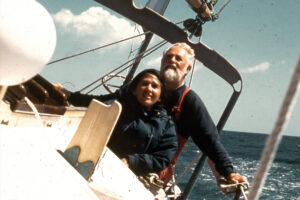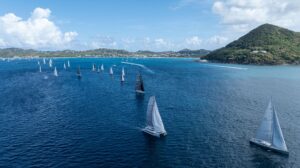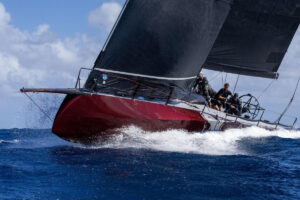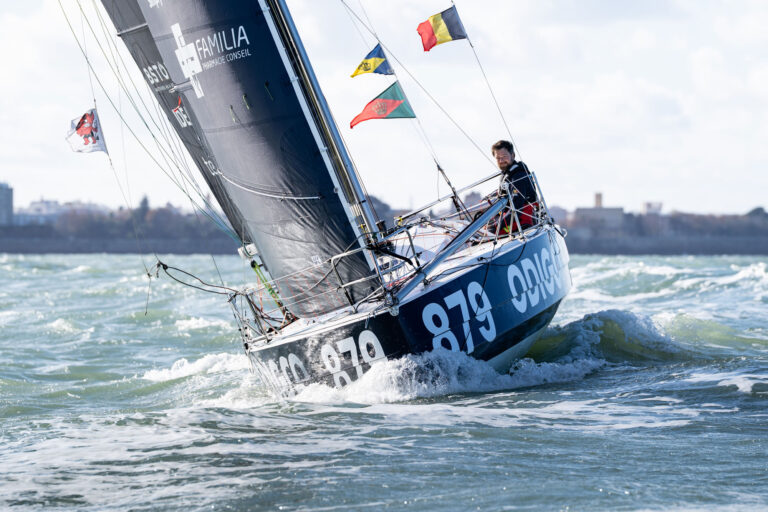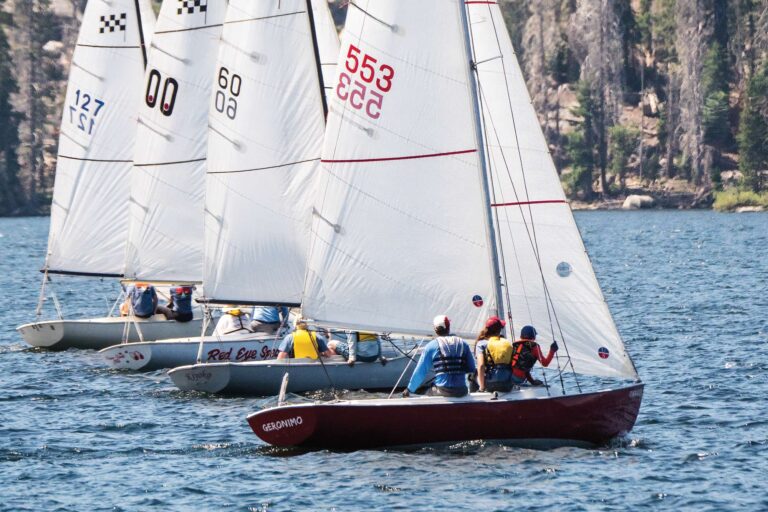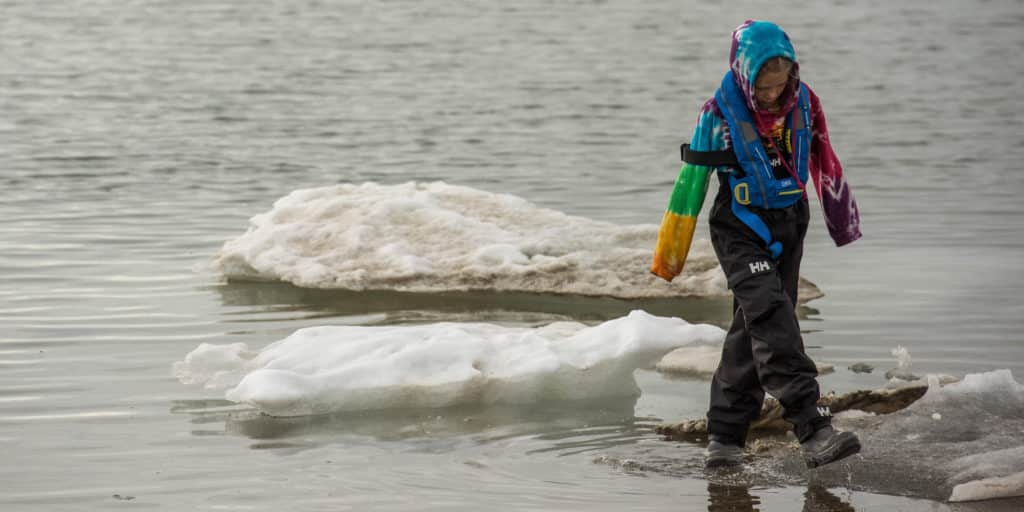
The ice is in charge up there in the arctic. It’s what we’d said from the very beginning. As we researched routes and talked to friends about the journey, our plans and dreams were based on a declared contingency: “we’ll sail to the Mediterranean, assuming we make it through the Northwest Passage”; “if we get through the ice, we might winter over in Iceland”. It was an outward reminder that underlying each assumption of what we wanted to do was the truth: the ice is in charge up there.
But in February, when a record warm front pushed across the Northwest and melted over 50% of the sea ice in the Bering Sea, and when the scientific graphs continued to state boldly that every decade we are losing 13% of the ice in the arctic, and when there was a clear route from Barrow to Cambridge Bay at the end of June (five or six weeks earlier than usual), it was hard to believe we wouldn’t be able to get through. I continued to include the contingency with my statements, but I will admit I didn’t really believe it.
I knew sailing through the Northwest Passage would be hard and cold and sometimes frustrating. But I also knew we had a rockstar crew, a stout boat and knowledgeable resources to help us. I felt confident we would persevere through the hard stuff and celebrate it all when we arrived in Greenland. This confidence was bolstered by the early predictions of warm temperatures and an “easy” ice year.
I didn’t linger on the “what ifs” of not achieving our goals. Instead I imagined watching polar bears ply the shoreline (from a safe distance). I imagined sailing past towering icebergs bigger than houses. I imagined standing on the bow, laughing in amazement at beluga whales feeding and frolicking nearby. I imagined the sweet taste of success after overcoming immense challenges and discomfort.
But reality was something quite different.
The reality was that despite record melting early in the year, the summer season found sections of the passage choked with ice driven south and stubbornly unmoving. It seems logical that the warmer temperatures and melting sea ice would reveal an easier passage, but it turns out the opposite can also be true. Instead of a single solid ice sheet that backs away from the northern shore during the summer, the warmer temperatures break up the ice sheet, spreading defiant chunks of ice across the water that range in size from a teacup to a city bus. These chunks act on the whims of invisible currents, but rarely in a predictable manner. Instead of a narrow band of navigable water between an ice sheet and the shore of northern Alaska, this year there was an unpredictable mass of swirling ice in every direction. The reality is we still don’t understand the changes that the arctic is undergoing.
We encountered these floating chunks of ice immediately upon rounding Point Barrow and entered the northwest passage. Sometimes we sailed easily among sporadic chunks dotting mostly clear water and sometimes we had to pick our way through a thick stew of churning ice. For a month, we paced from anchorage to anchorage, occasionally spending sleepless nights defending our anchor chain from ice slabs. Bundled from head to toe against the biting winds, we wandered along one sandy spit after the other, skipping rocks and watching for polar bears under heavy grey skies. We started running out of time in the season, and the ice stew in front of us refused to budge. Along with our daily ice reports, harrowing stories rolled in from other boats attempting the passage. One got caught in unexpectedly thick ice and anchored to an iceberg that broke free in 50 knots of wind. One was nearly driven up onto the rocks when a fast-moving ice slab ensnared their anchor chain, forcing them to cut away their ground tackle. Nobody was making much progress.
Finally, we made the torturous decision. We bowed in deference to the ice in front of us, tucked our tail, and rain west. It was devastating, but it was the prudent decision for us. As we retreated, the ice repots didn’t get any better and updates from other boats didn’t hold any new optimism. Just two days into our retreat, the truly terrifying news filtered in that a boat had sunk on the east side of the passage, its side hove in by ice. The crew spent 11 hours huddled on an iceberg before being rescued by a helicopter. The news sent shudders through our crew and reinforced what I had been working hard to convince myself: we made the right choice to turn back.
This was not the year for DogBark! to transit the Northwest Passage. In fact, it was not the year for most boats to transit the Northwest Passage. In the end, of the 21 boats that attempted the passage from either side, only two were able to complete the passage, and both spent weeks trapped in thick unforgiving ice.

Substantiating our weak conviction in the contingencies we had stated aloud for so long, our plans did not include options for ending the summer season on the west coast of the US. So, we had to improvise. One night, when retreat was starting to feel inevitable, we unfurled a chart across the table and focused our attention on the west side of the continent. With all of the initial options off the table (Greenland, Iceland, Nova Scotia, Portugal), we discussed new possibilities, weather and timing. After pondering a winter in Alaska or a passage strait to Hawaii or a marathon run to Mexico, there was a unanimous vote for Hawaii.
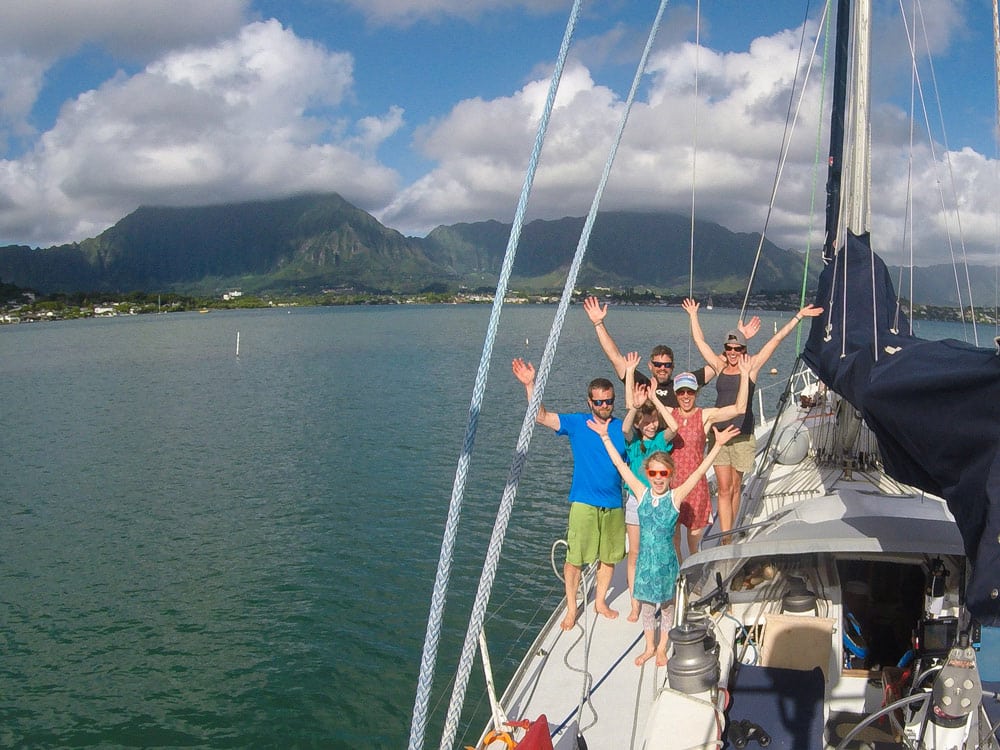
Once our decision was made, we moved fast to get out of the arctic. In three days, we had sailed south of the arctic circle, leaving the endless cold grey days and aggravating swirling ice and uncharted sandy spits behind. In those three sad days, we backtracked across four weeks of waiting and worrying and watching, past the long hours of intense navigating, through the baited anticipation and the dashed hopes. Just like that, we were out of the arctic and on our way south.
As we sailed out of Alaska and around the Pacific High, the decision felt righter and righter every day. The crew relaxed and shed layers of jackets and disappointment. Watches got immeasurably easier with the warm breezes, deep water and obvious lack of ice. Dreams of lush green hillsides and fresh coconuts soon supplanted fears of icebergs and polar bears.
The ice is in charge up there, and we know that now better than ever. Sailing in the arctic is humbling and intense and beautiful and scary and frigid and inspiring. We learned new things about each other, our own fortitude, and our planet, and it probably won’t be our last arctic adventure. It seems likely that another year will find us bundling up and sailing north to transit the northwest passage…if the ice allows it, of course.

